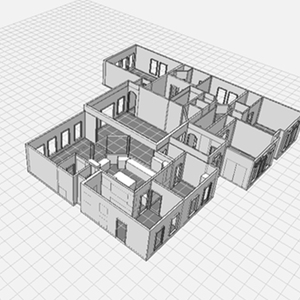*
I do built-in cabinetry for contractors and have been asked a few times to come up with a cost per linear foot for basic, paint-grade built-in cabinets. The cabinets I make are installed primarily in living rooms, dens,home offices, etc. They have open shelves above for books, etc and enclosed lowers with doors. I understand builders needs to pre-price work and develop estimates for clients, but this method seems like a sure-fire way for me to under-price my work. I typically price my work based on time, materials, overhead and profit. Most of the work is done in my shop, and then delivered and installed to the job site. Any tips? Thanks.
[email protected]
Discussion Forum
Discussion Forum
Up Next
Video Shorts
Featured Story

Join some of the most experienced and recognized building professionals for two days of presentations, panel discussions, networking, and more.
Featured Video
How to Install Exterior Window TrimHighlights
"I have learned so much thanks to the searchable articles on the FHB website. I can confidently say that I expect to be a life-long subscriber." - M.K.
Fine Homebuilding Magazine
- Home Group
- Antique Trader
- Arts & Crafts Homes
- Bank Note Reporter
- Cabin Life
- Cuisine at Home
- Fine Gardening
- Fine Woodworking
- Green Building Advisor
- Garden Gate
- Horticulture
- Keep Craft Alive
- Log Home Living
- Military Trader/Vehicles
- Numismatic News
- Numismaster
- Old Cars Weekly
- Old House Journal
- Period Homes
- Popular Woodworking
- Script
- ShopNotes
- Sports Collectors Digest
- Threads
- Timber Home Living
- Traditional Building
- Woodsmith
- World Coin News
- Writer's Digest


















Replies
*
You basically have all the information you need. Cost of materials, overhead and profit. Your only concern would be time and each job will be different.
Allow yourself more time for special circumstances ie. lots of corners, round walls ect. A price per lineal foot will be different for each job you do.
*It's tough to standardize "custom" work, eh?After going through the same thing, I arrived at a "per box cost".I looked at all my previous jobs. What threw me was I kept trying to come up with a per-foot cost instead of figuring each carcase as a unit cost.Each carcase is usually 3 foot wide. Figure the cost of the carcase, and divide by 3, and you have your per foot cost.Add to that all the goodies. Consider it an add on. Have a "standard". A model you consider good, but basic and allow for additional details for an additional cost.Get the picture? Your really not giving your builders an end-all price, because unless you want to start shipping your cabinets in a box, the request for standard prices is impossible. At least for me.But with a per-foot price, a builder can offer your sevices, at a ballpark. You still have to come out, measure, see how outta plumb,square and level it really is, show trhe builder and owner the upgrades and sign an agreement.Nothing really changes, you simply have given the builder an additional tool to market your services and pre-qualify your lead.
*Hi, Mark- Only thing that I would point out about your post is that you have a box with four sides and a back, whether it is 1ft. wide or 4ft. wide. Perhaps then a basic per box charge, add-on per lin. ft., and then of course all the goodies as you say. Yes, difficult to price the custom work, since it's ALL custom. Better to be able to provide a 'basic' cost to put 'em in the ballpark. EVERYONE wants an idea of want things are gonna cost. My 2 cents. Shalom- Ken
*We have two kinds of custom cabinetry jobs, those we do in-house and those that we subcontract. As a contractor we are not interested in a firm number or a low number. We just want a ballpark number that will be enough for a mid-range job. We can plug this in as an allowance and not have to worry about it. If the customer wants something over and above this, we will get the money for it. It will not be the cabinetmaker's problem, just delivering the goods.You should be compiling a price book based on your past work which can give you accurate numbers for similar projects in the future. Make sure you have adequate provisions for all your overhead and a healthy profit and don't worry to much about losing jobs that cannot meet those requirements. The customers you want will pay if your work is good and timely.
*I was once asked by a customer to come up with a price list they could use to price stuff when our office wasn't open. Couldn't do it, though - there are tons of things that affect truss prices. The solution we came up with was some "sample pricing". ie: prices for some situations that came up frequently, like a 24X30 garage, 30X60 pole barn, etc. Even if the prices weren't exact, the customer could still use those numbers to come up with an estimate of the number they want. (Like add 10% to the 30' truss to get an estimate for a 32' truss)Maybe something like that would work, since you mention doing similar things repeatedly.